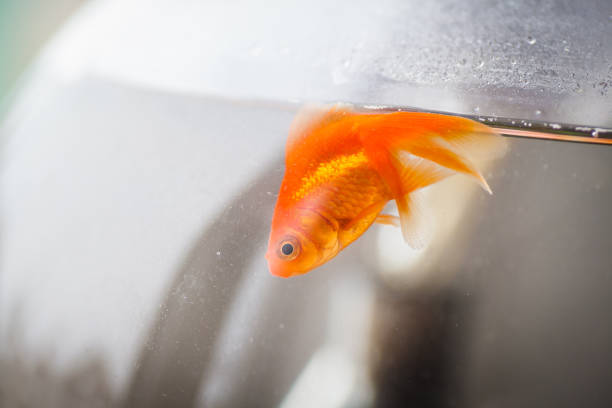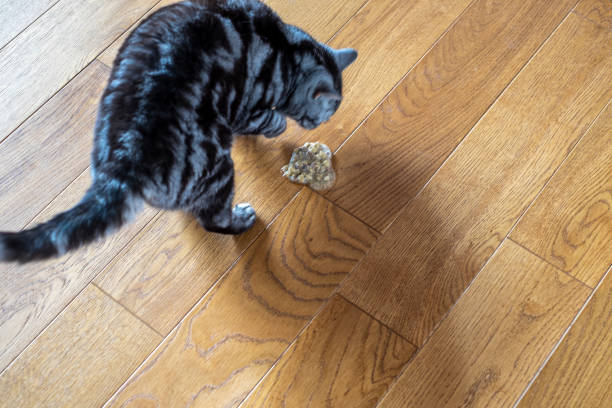Fish Keep Dying in Tank: 12 Hidden Causes & Emergency Fixes
Nothing hurts more than walking up to your tank and seeing another fish floating at the top. It can feel like no matter what you do, your fish keep dying in the tank. You’ve cleaned it, changed the water, and given them food on time, yet they still die one by one. It’s frustrating, heartbreaking, and makes you wonder if you’re missing something important.
The truth is, fish dying suddenly in an aquarium often comes from problems that aren’t easy to spot. It might be small changes in the water, stress your fish can’t handle, or tiny mistakes in the setup that slowly get worse. These things can happen to anyone, even people who have kept fish for years.
This guide will help you find the real reasons behind fish tank death causes and show you what to do to stop it before you lose more fish. If you’ve tried water changes, treated sick fish tank symptoms, or just feel lost, you’re in the right place. You’ll find clear steps that make sense, along with emergency fish tank rescue tips to protect the fish you have left and bring your aquarium back to life.
Emergency Action Plan When Fish Start Dying
Crisis Steps to Stop More Losses Immediately
Do This First to Save Your Fish
- Test ammonia and nitrite levels right away
Toxic water is often the reason fish keep dying in tank after tank. Ammonia or nitrite can spike fast, especially in new setups or overcrowded tanks. Use a liquid test kit, not strips. The EPA’s guidance on water testing explains why accurate testing is crucial for aquatic life. If ammonia or nitrite shows up, act fast. - Do a 25% to 50% water change with treated water
Use water that’s the same temperature and treat it with a good dechlorinator. This helps remove toxins without shocking your fish. Don’t skip this step even if the water looks clear. - Stop feeding for 24 to 48 hours
Leftover food adds waste and worsens fish dying water quality. Skipping feeding for a day or two won’t harm your fish but gives your tank a break to settle. - Increase oxygen with more surface movement
Add an air stone or raise your filter output to stir the surface. Low oxygen can cause fish dying suddenly in aquarium tanks, especially during stress. - Take out any dead fish or leftover food right away
Rotting matter releases harmful toxins. It can also spread sickness fast.
Emergency Supplies to Get Today
- Freshwater test kit for ammonia, nitrite, nitrate, and pH
- Fast-acting water conditioner
- Beneficial bacteria (bottle form is fine)
- Backup air pump or battery-powered bubbler
Call for Help If You Notice This
- Fish gasping at the top, all at once
- Sudden color loss, pale gills, or white patches
- Every fish hiding or barely moving
- Cloudy water or a strong bad smell
These can be signs of a deeper issue like fish tank death causes linked to toxins, poor bacteria balance, or a disease outbreak. It might also point to fish dying one by one due to unseen stress buildup.
If you’ve already done a water change and still see these sick fish tank symptoms, it’s time to get advice fast either from a vet or a local fish store expert trained in fish death prevention methods. The American Veterinary Medical Association provides guidelines for finding qualified aquatic veterinarians. Quick help can turn a full crash into an emergency fish tank rescue.
New Tank Syndrome: Your Biggest Hidden Killer
New tank syndrome sounds like a rare issue, but it’s actually one of the most common fish tank death causes. It happens when a new aquarium doesn’t have enough good bacteria to break down fish waste. At first, everything looks fine. The water is clear, the tank is running, and the fish seem okay. Then out of nowhere, fish start acting strange or die overnight. This is why fish keep dying in tank after tank, especially within the first few weeks.
During the first month, your tank goes through something called cycling. This is when bacteria slowly build up to help turn toxic waste into safer forms. According to research published in Applied and Environmental Microbiology, the nitrogen cycle process typically takes 4-6 weeks to establish in new aquariums. Without these bacteria, ammonia and nitrite levels shoot up quickly. Even a small amount can lead to fish dying suddenly in aquarium water that looks clean to the eye.
This is not just bad luck. It’s one of the top aquarium fish mortality problems, and it’s preventable. Keep an eye out for sick fish tank symptoms like gasping, hiding, or losing color. Testing the water often and using bacteria boosters can make a big difference. If fish are dying one by one with no clear cause, you may be dealing with new tank syndrome and need an emergency fish tank rescue before more are lost.
Why Fish Still Die Even With Perfect Water Test Results
It feels like a slap in the face. You test your tank, and everything looks great. Ammonia is zero, nitrite is zero, nitrate is low. But the next morning, one of your best fish is floating. A few days later, another goes. You’re left wondering what went wrong. The truth is, test kits don’t catch everything. And in a closed tank, things can change fast. Fish dying in tank water that looks “safe” is more common than you think.
What most test kits don’t show are things like sudden pH swings, oxygen drops, temperature changes, or even a bacterial bloom that steals oxygen overnight. These invisible problems lead to fish dying suddenly aquarium-wide, with no warning signs from your water results. If fish are dying one by one, despite perfect numbers, it could be one of these hidden issues. Keep an eye out for sick fish tank symptoms like labored breathing or hanging near the surface. These are often early signs of oxygen problems or unstable water. Stable doesn’t always mean safe, and that’s what makes aquarium fish mortality problems so frustrating. For better fish death prevention methods, go beyond the numbers and watch your fish closely. Their behavior tells the real story, even when your kit says everything is fine.
12 Hidden Causes Killing Your Fish Right Now
Even when your aquarium looks clean and test results seem perfect, your fish might still be in danger. These 12 hidden causes are often missed by even experienced owners and spotting them early could save your fish’s life.
Chlorine and Chloramine Poisoning
Tap water treatment chemicals kill fish instantly, even in small amounts. Many water conditioners don’t neutralize chloramine effectively, and some areas use super-chlorination that overwhelms standard dechlorinators. The Water Quality Association explains the differences between chlorine and chloramine treatment requirements. Always treat water 24 hours before use and double your dechlorinator dose during water changes.
pH Shock from Rapid Changes
Fish can handle wide pH ranges but die quickly from sudden changes. Decorations, driftwood, and even gravel can alter pH unexpectedly. Regular small water changes prevent dangerous pH swings that happen when neglected tanks get massive water changes.
Temperature Fluctuations You Don’t Notice
Heater failures, air conditioning changes, and seasonal temperature swings stress fish severely. Even 3-4 degree fluctuations over hours can trigger diseases and deaths. According to the National Oceanic and Atmospheric Administration, temperature stability is critical for fish metabolism and immune function. Backup heaters and temperature monitoring prevent these silent killers.
Oxygen Depletion During Night Hours
Plants consume oxygen at night while bacteria work overtime processing waste. Heavily planted tanks or those with large bio-loads can suffocate fish during dark hours when oxygen levels drop dramatically. Surface agitation and air stones provide life-saving oxygen. The Aquaculture Research Institute explains how dissolved oxygen levels fluctuate in closed aquatic systems.
Nitrite Poisoning in Established Tanks
Mature tanks can suddenly develop nitrite spikes from filter disturbances, medication use, or overcleaning. Nitrite blocks oxygen transport in fish blood, causing them to suffocate even in well-oxygenated water. Frequent testing catches these deadly spikes early.
Stress from Tank Mates and Overcrowding
Aggressive fish, incompatible species, and overcrowding create chronic stress that kills through suppressed immune systems. Stressed fish die from minor problems that healthy fish survive easily. Research from the Journal of Fish Biology demonstrates how chronic stress suppresses fish immune systems. Proper stocking and compatibility prevent stress-related deaths.
Bacterial Infections from Poor Tank Maintenance
Dirty filters, uneaten food, and dead plant matter create bacterial blooms that overwhelm fish immune systems. These infections often kill multiple fish rapidly without obvious external symptoms. Regular maintenance and feeding control prevent bacterial explosions. The Fish Health Section of the American Fisheries Society provides resources on preventing bacterial diseases in aquarium fish.
Medication Residue and Chemical Contamination
Previous medications, soap residue, cleaning chemicals, and even hand lotion can poison fish weeks after exposure. Activated carbon removes some chemicals, but many persist in tank systems. Quarantine tanks and careful chemical management prevent accidental poisoning.
Internal Parasites Spreading Unnoticed
Microscopic parasites from new fish, plants, or food can devastate entire tank populations before symptoms appear. These parasites often cause slow deaths that look like random losses. The World Organisation for Animal Health maintains databases on aquatic animal diseases and prevention methods. Quarantine procedures and prophylactic treatments prevent parasite outbreaks.
Poor Quality Fish Food and Overfeeding
Expired food, poor-quality ingredients, and overfeeding create digestive problems and water quality issues that kill fish gradually. Old food loses nutrients and develops harmful bacteria. Quality food in proper amounts prevents nutrition-related deaths. The Association of American Feed Control Officials sets nutritional standards for aquatic animal feeds.
Filter Problems Disrupting Beneficial Bacteria
Overcleaning filters, replacing all media simultaneously, or using antibacterial cleaners destroys beneficial bacteria colonies. This creates new tank syndrome in established systems, causing toxic spikes that kill fish quickly. Proper filter maintenance preserves life-sustaining bacteria.
Hidden Electrical Problems Affecting Fish
Stray electrical currents from damaged equipment, improper grounding, or power fluctuations stress fish chronically. These electrical problems rarely cause immediate death but weaken fish over time. Ground fault interrupters and regular equipment inspection prevent electrical stress. The Electrical Safety Foundation International provides guidelines for safely using electrical equipment around water.
Why Your Water Changes Might Be Killing Fish
Changing water sounds like the right thing to do, but doing it the wrong way can lead to more harm than good. Fresh water isn’t always safe water. Fish can react badly when their surroundings shift too fast. Things like chlorine in tap water, sharp temperature jumps, or a sudden change in pH can all mess things up fast.
Doing too much at once is risky. Replacing over 25% of the tank at one time can cause stress and even shock. This is one of the most common fish tank death causes. Fish dying one by one after a water change is not rare. The tank’s helpful bacteria also get disturbed, leading to more problems.
Stick to small, steady changes. Let fresh water sit for a while and match its temperature to the tank. Always test water for chlorine, pH, and hardness before pouring it in. The U.S. Geological Survey provides detailed information about water hardness and its effects on aquatic life.
This simple routine helps with fish death prevention methods, keeps fish from dying suddenly in the aquarium, and helps spot sick fish tank symptoms early. It also reduces the chances of facing emergency fish tank rescue moments. Better water habits can stop aquarium fish mortality problems and improve your fish’s chances of survival.
Emergency Treatment for Dying Fish You Can Start Today
Seeing a fish gasping or lying still can be scary, but quick action matters. Before rushing to the pet store, try simple steps at home. These emergency tips can help stabilize your fish and maybe even save its life.
Hour 1 – Critical Life Support:
- Test ammonia and nitrite immediately – write down exact numbers
- Perform 25% water change with dechlorinated, temperature-matched water
- Add beneficial bacteria supplement directly to filter
- Increase surface agitation with air stone or powerhead
- Remove all uneaten food and debris from tank bottom
Hours 2-6 – Stabilization Measures:
- Retest water parameters every 2 hours
- Perform additional 25% water changes if ammonia/nitrite above 0.25 ppm
- Add aquarium salt (1 tbsp per 5 gallons) to reduce stress. The Food and Drug Administration provides guidelines on safe salt use in aquatic environments.
- Monitor fish behavior and breathing patterns
- Prepare quarantine tank for severely affected fish
Days 1-7 – Recovery Protocol:
- Continue daily water testing and changes as needed
- Feed sparingly every other day until stability returns
- Add beneficial bacteria daily for one week
- Monitor for secondary infections or disease outbreaks
- Gradually return to normal maintenance schedule
Quick Fixes That Save Fish When Nothing Else Works
When fish keep dying in tank after tank and nothing seems to help, these last-resort tricks can make a difference. They aren’t magic, but they’ve worked in serious emergencies.
- Borrow filter media from a healthy tank.
If you have another aquarium running smoothly, take some filter sponges or gravel and place it into the sick tank. This instantly adds good bacteria to help clean the water. - Get more oxygen in fast.
Add extra air stones or lower the water level slightly so the filter output stirs the surface. This helps fish breathe easier, especially when they’re gasping near the top. - Cool things down carefully.
In hot weather, place sealed bags of ice into the tank to gently drop the temperature. Cooler water slows harmful bacteria and lowers stress. - Keep the temperature steady.
In cold homes, a quick plug-in heater can stop sudden drops that cause fish dying suddenly aquarium-wide.
These tricks don’t solve the root problem, but they can slow down aquarium fish mortality problems just long enough to get things under control.
Look out for sick fish tank symptoms like clamped fins or heavy breathing. Watch for fish dying one by one, it often means water issues. Emergency fish tank rescue works best when it buys time to fix deeper fish tank death causes like poor filtration or unstable parameters. These steps are not fish death prevention methods long-term, but they can help during a crisis caused by fish dying water quality shocks.
How to Tell If Your Tank Is Actually Healthy
Not every clean-looking tank is truly okay. Sometimes, things go wrong quietly and lead to fish dying suddenly in the aquarium.
What a Healthy Tank Looks Like
- Fish are bright and full of energy
They swim around comfortably and come forward when it’s feeding time. If your fish seem excited to eat and aren’t hiding, it’s a good sign. - Water stays clean and clear
You shouldn’t be fighting murky water every few days. If your tank looks clear even between cleanings, it shows things are balanced. - Plants grow without wild algae
Healthy tanks support steady plant growth. If algae isn’t taking over and your plants look fresh, that’s a green flag. - No sudden fish losses
A stable tank won’t have fish dying suddenly. The Smithsonian’s National Zoo offers expert guidance on maintaining healthy aquatic ecosystems. If you rarely lose a fish and everyone seems fine, your setup is doing well.
Signs Something’s Off
- Fish stay at the top or hide all day
Even if your water test looks okay, this can signal low oxygen or stress. - Algae grows too fast or water looks cloudy
These are common fish tank death causes and hint at poor water quality. - Bad smell or filter clogs quickly
These can point to sick fish tank symptoms or rotting waste. - Fish dying one by one
This often means deeper aquarium fish mortality problems. An emergency fish tank rescue might be needed.
For fish death prevention methods, start by checking water changes, feeding habits, and tank crowding.
How to Prevent Future Fish Deaths Before They Start: Simple Habits That Work
If fish keep dying in tank after tank, it’s not just bad luck. A few small habits can make a big difference over time. Prevention is often easier than dealing with another emergency fish tank rescue. The tips below are based on real aquarium fish mortality problems and what actually helps tanks stay stable. No complicated systems or expensive gear, just basic care done right and done often.
Daily Habits That Keep Your Fish Safe
- Watch how your fish act during feeding. Healthy fish swim up, stay alert, and show interest. If a fish hides or barely moves, it may be an early sign of sick fish tank symptoms.
- Always check the water temperature and make sure heaters, filters, and lights are working the way they should.
- Scoop out any food left in the tank after 5 minutes. Old food breaks down fast and affects fish dying water quality.
Weekly Tank Care That Matters
- Use a test kit to check ammonia, nitrite, nitrate, and pH. Write down the numbers. It helps spot fish tank death causes before they get worse.
- Swap out a portion of the water every week with treated water.
- Wipe off algae and remove gunk before it becomes a mess.
Monthly Tasks That Protect the Whole Tank
- Rinse filter parts gently in tank water. Don’t scrub too hard or you’ll lose the good bacteria that help balance the water.
- Take a close look at all equipment. If something looks weak or worn out, fix it now instead of waiting.
- Think about how your fish are getting along. Overcrowding, stress, and bullying are real causes behind fish dying one by one.
This is how real fish death prevention methods work, with steady habits, not panic fixes. If fish dying suddenly aquarium issues have happened before, these small steps can make sure they don’t happen again.
What to Keep in Your Fish Emergency Kit (Before Trouble Starts)
Fish tanks can go from calm to crisis in hours. If fish keep dying in tank after tank, a small kit with the right tools can help you act fast and save lives. These items aren’t just for big emergencies, they help with early signs too, like fish dying one by one, gasping at the top, or cloudy water. Here’s what’s worth having on hand, grouped by what each thing helps with.
Water Testing Essentials
- Liquid test kit that checks ammonia, nitrite, nitrate, and pH. These four are the most common fish tank death causes and should be checked weekly or during any issue.
- Digital thermometer for checking water temp quickly. Sudden drops or spikes can lead to fish dying suddenly aquarium-wide.
- TDS meter to catch water chemistry changes before they become a problem. The National Institute of Standards and Technology explains the importance of monitoring dissolved solids in water systems. It helps track minerals and dissolved waste.
Emergency Treatment Supplies
- Beneficial bacteria supplement to restabilize your tank after a water change or filter rinse.
- Reliable water conditioner that handles both chlorine and chloramine. Poor tap water is a hidden reason behind bad fish dying water quality.
- Aquarium salt to reduce stress and help prevent illness. Great to have when sick fish tank symptoms first show up.
Backup Equipment That Saves Tanks
- Battery-powered air pump to keep oxygen flowing during a power cut or filter stop. This alone can stop an emergency fish tank rescue from turning into a full loss.
- Spare heater that fits your tank size. A broken heater can crash a tank overnight.
- Extra filter media from a healthy tank, stored in tank water. It gives you an instant bacteria boost if something wipes out your cycle.
These supplies aren’t about overdoing it. They’re quiet helpers sitting in a box until you really need them. The goal is to stop small issues before they grow into full aquarium fish mortality problems. Fish death prevention methods don’t have to be hard, you just have to be smart and steady about it.
How to Bounce Back After Your Fish Keep Dying in the Tank
Watching fish die one after the other can leave you feeling helpless and frustrated. It’s not just about losing the fish, you also lose confidence, money, and a lot of effort. But if you’re reading this, it means you haven’t given up, and that’s already a big step.
Take a break before rushing to restock. Give your tank at least 4 to 6 weeks to settle. This time allows good bacteria to grow back and gives your water a chance to stabilize. Fish dying suddenly in the aquarium is often linked to poor water conditions or a tank that hasn’t fully recovered from stress. Use this period to look closely at your setup—was it a filter issue, overfeeding, or maybe an unnoticed infection?
Check your equipment. If your filter has been acting up or your heater is old, this might be the right time to get something more reliable. Bad water leads to aquarium fish mortality problems more often than people think. Also, pay attention to sick fish tank symptoms like weird swimming or gasping at the surface. These small things warn you early.
Jot down what happened. Write out what went wrong, what you noticed, and how fast the fish were dying. This helps you catch patterns like fish dying one by one or only certain types being affected. From there, work on improving your tank habits. Change water regularly, don’t overcrowd, and test your water often.
No setup is perfect, and even experienced owners run into problems. Fish death prevention methods start with patience and proper care and not just reactions when things go bad. Over time, your fish will thrive again, and the experience will make you a much better aquarist.
Fish Death: Common Questions Answered
My fish are dying but water tests are perfect – what’s wrong?
Perfect test results often miss chlorine poisoning, oxygen depletion, temperature shock, or bacterial infections. Focus on recent changes to your routine, new additions to the tank, or equipment problems that standard tests don’t detect.
How many water changes can I do safely when fish are dying?
Multiple small water changes (20-25%) every few hours are safer than large single changes. Always match temperature and use dechlorinator. If ammonia or nitrite levels are high, continue changing water until levels drop below 0.25 ppm.
Should I remove my dying fish or leave them in the tank?
Remove dead fish immediately to prevent disease spread and water contamination. Isolate obviously sick fish if possible, but don’t stress fish that are just acting slightly off – stress can kill faster than many diseases.
Why are only some of my fish dying, not all?
Some species are more sensitive to toxins, temperature swings, or oxygen changes. It could also mean one group was already weakened. Maybe from transport stress or bullying while others are still coping better. Check tank zones for uneven conditions.
Should I feed my fish while they’re dying?
It’s better to pause feeding for 24–48 hours. Sick fish often don’t eat, and leftover food can spike ammonia. Focus on water quality and aeration first because fish can survive days without food, but not in toxic water.
Final Thoughts
Most fish deaths result from preventable problems that become obvious once you know what to look for. By recognizing early warning signs, maintaining proper water conditions, and having emergency supplies ready, you can save fish that would otherwise die from common aquarium problems.
Every fish keeper experiences losses while learning, but each experience teaches valuable lessons that prevent future problems. Focus on building stable, healthy tank systems rather than reacting to crises, and you’ll discover that successful fishkeeping is both achievable and deeply rewarding.






